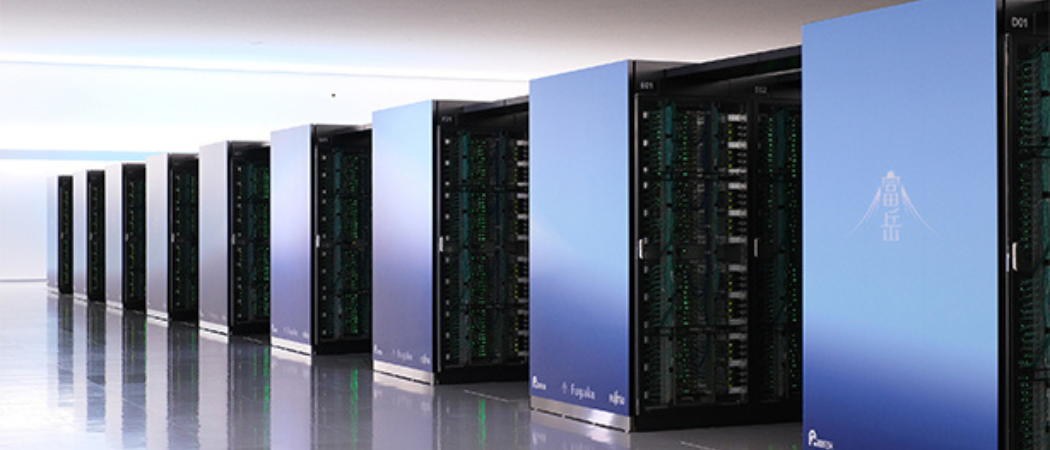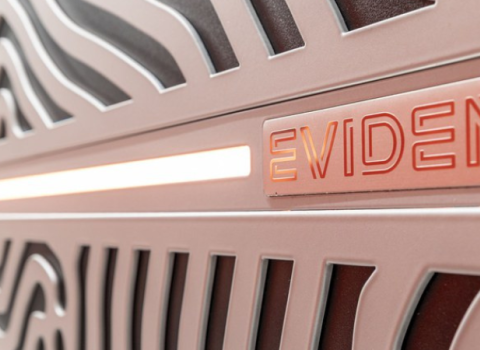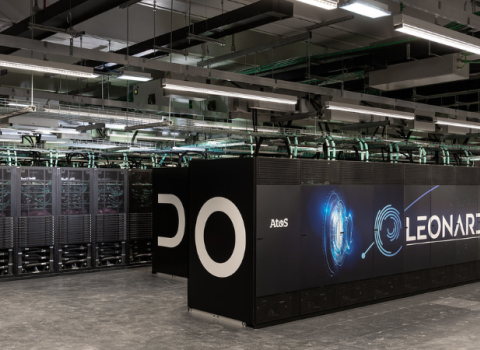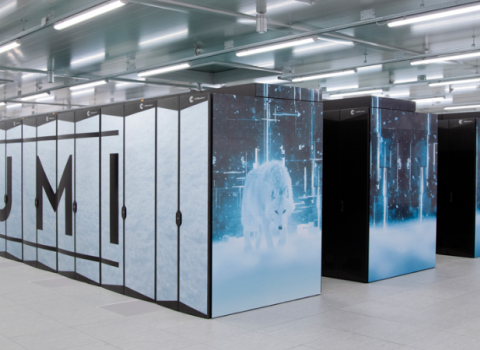European and Japanese scientists will fine tune their scientific models on each other’s machines, hopefully boosting performance and future-proofing code. It’s the latest push from Brussels to create stronger research links with ‘like-minded’ democracies

The Japanese supercomputer Fugaku. Photo: RIKEN Center for Computational Science
From next year select European and Japanese scientists will be able to use each other’s supercomputers, as part of a deal that could lead to faster scientific simulations in areas such as climate and materials science and help design the next generation of machines in the EU.
It’s the latest effort by Brussels to cosy up to Tokyo in research and technology, as the EU looks to build better ties with fellow democracies, particularly in the aftermath of the invasion of Ukraine.
The tie-up is also a sign that with supercomputers becoming ever more expensive, countries are looking to forge geopolitical computing alliances to help them stay competitive.
“We have three years to show the world that our joint science is really, really powerful,” said France Boillod-Cerneux, who coordinates the HANAMI project, which officially launches at the beginning of 2024.
For the Europeans, the deal will allow them to run simulations on Japan’s Fugaku machine, on some measures the world’s first exascale supercomputer, capable of performing more than one billion billion operations per second. It was overtaken last year by the US Frontier machine, but still ranks as the world’s second fastest.
Europe still lacks an exascale computer and has only this month signed a €273 million deal to build one in Germany. Eviden, a subsidiary of French IT giant Atos, won the contract and will install the computer, to be named Jupiter, at the Jülich Supercomputing Centre near Cologne. It will use graphics processing units from the US firm Nvidia and European-designed central processing units from the French company SiPearl.
In advance of Jupiter’s commissioning, the HANAMI project, “is a great chance to access an exascale machine”, said Boillod-Cerneux, a researcher at France’s Alternative Energies and Atomic Energy Commission (CEA).
The project has a budget of up to €5 million from Horizon Europe, granted through EuroHPC, the EU joint undertaking that plans and funds much of the bloc’s supercomputing needs.
It will involve 14 European and 10 Japanese research organisations, and is set to focus on climate models, medical modelling, and materials science.
It is initially set to last three years, but Boillod-Cerneux hopes it can evolve into something more permanent. “I really would like it to become something sustainable,” she said.
Code swap
The project is not about developing new scientific software, the organisers stress. Rather, it will allow European and Japanese scientists to port their existing code to each other’s very different machines, testing performance and making sure applications will run on alternative computing architectures.
“The aim is that we improve both the European and Japanese code,” said Boillod-Cerneux.
Scientists need to know their code can be ported to the next generation of machines, and testing it out on another country’s supercomputers is a way of assessing this.
As Boillod-Cerneux noted, currently, many supercomputers use chips from the US manufacturer NVIDIA. “There's no guarantee that in five years, we will have secure access to an NVIDIA machine,” she said, hence the need to future-proof scientific software.
Different architecture
Unlike Europe’s supercomputers, Japan’s Fugaku does not rely on accelerators – processors that are similar to graphics processing units used to run video games, said Daniel Opalka, head of research and innovation at EuroHPC. “European researchers will be able to understand the Fugaku architecture to scale and adapt their software to test and benchmark on the Fugaku system,” he said. “Whereas at the same time, Japanese researchers can explore the accelerator-based technologies that we provide in Europe.”
“Supercomputers as a platform are not just about the hardware,” said Satoshi Matsuoka, director of the RIKEN Center for Computational Science, which hosts Fugaku. “It is about system software, applications, and various scientific experiences and knowledge, including data.”
By working on each other’s machines, scientists from both sides “can utilise the combined platforms in a best way to advance their science jointly,” he said.
The next generation of European supercomputer processors will use the same architecture as Fugaku, said Opalka. Given this, it’s important for European scientists to practice on this type of setup beforehand. The code-swap could also influence what type of supercomputers the EU builds in the future. The project should provide “significant knowledge for future investment decisions in Europe,” he said.
It’s even possible that using existing code on a new machine “delivers for a specific problem a much higher performance [and] that this will enable new scientific discoveries,” Opalka said, although he stressed that HANAMI’s aim is improving code and exchanging knowledge, rather than research breakthroughs per se.
Digital partnership
The HANAMI project is one of the first fruits of an EU-Japan digital partnership, the first of its kind inked in 2022.
It commits Brussels and Tokyo to cooperate in areas including digital trade practices, connectivity, and pilot projects in areas like AI. The EU has subsequently signed similar deals with South Korea and Singapore.
These deals are explicitly about sharing “common values” and promoting a “human-centric digital transformation.”
The EU is also in talks with Japan about association to the Horizon Europe research and innovation programme, although there’s still disagreement in the Japanese government over whether to progress to formal negotiations.
Efforts to get far flung countries to join Horizon go back years, but have been given added impetus by the invasion of Ukraine by Russia, as the Commission seeks to build a coalition of “likeminded” democracies cooperating on science and technology.
There is also “convergence” between Japan and the EU on how to approach generative AI, Commission vice-president Vera Jourova told Reuters earlier this week.
Too expensive to build alone
The HANAMI tie-up also illustrates that even for major powers with deep pockets, building new supercomputers is now so expensive that it is starting to make sense to share computing resources with other countries – so long as they are friendly.
The €273 million cost of the Jupiter supercomputer is “a very significant amount,” even for a country like Germany, Opalka said. EuroHPC, which is funded by the entire EU, is footing half the bill. “Small countries certainly have to find collaboration partners,” said Opalko.
This is a wider phenomenon, said Matsuoka – not just supercomputers, but all big scientific infrastructure projects are getting too costly for just one country to fund and run.
But he sees this as potentially positive. “By conjoining to unify the platforms, the scientific knowledge gained thereof will be directly shared by the broader international community rather than isolated within a country or a region,” he said.





 A unique international forum for public research organisations and companies to connect their external engagement with strategic interests around their R&D system.
A unique international forum for public research organisations and companies to connect their external engagement with strategic interests around their R&D system.